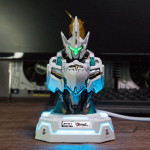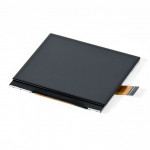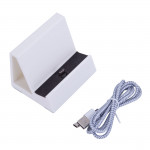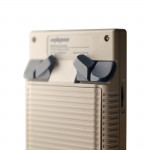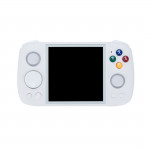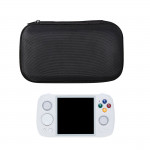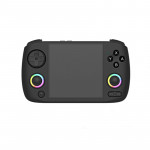Step-by-Step Miyoo Mini (and Miyoo Mini Plus) Starter Guide
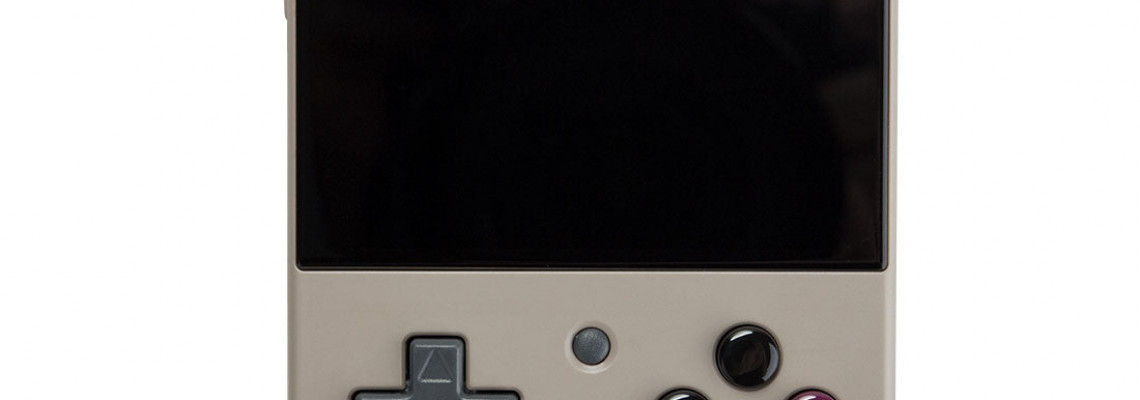
Step-by-Step Miyoo Mini (and Miyoo Mini Plus) Starter Guide
Introduction Welcome to the diverse world of the Miyoo Mini series! Whether you're a tech-savvy gamer looking for a portable powerhouse, a retro gaming enthusiast, or a casual player looking to delve into the past, this guide is your go-to resource. Here, we'll go over the features and capabilities of the Miyoo Mini, Miyoo Mini Plus, and their iterations, V2, V3, and V4. Each model has its unique features and capabilities, and we're here to help you maximize them.
A Glimpse into the Miyoo Mini Universe
- Miyoo Mini: This is the original model, ideal for people who value portability and simplicity in their retro gaming experience.
- Miyoo Mini Plus: This edition offers improved connectivity and performance for players looking for a little more, and it gives them access to multiplayer options.
- V2, V3, V4 Variants: With enhancements like larger screens, more storage, and longer battery life, these variants show how the Miyoo Mini has evolved to accommodate a wider variety of gaming tastes.
What's Inside This Guide?
You will experience the following during our journey:
- fundamental setup steps for every model
- Comprehensive guidelines for installing and customizing software.
- Hints and techniques to improve your gaming experience regardless of your degree of expertise.
- A look at how each Miyoo Mini model may be used to its fullest potential.
This tutorial has something for everyone, whether you are starting with the unboxing of your very first Miyoo Mini or you are interested in exploring the deeper functions of more advanced versions. Now that we have that out of the way let's open the door to the exciting world of retro gaming with your Miyoo Mini!
Initial Setup and Firmware Update
Unboxing and Initial Device Setup
Best wishes on the successful acquisition of your Miyoo Mini! A good place to begin is by removing it from its packaging and putting it in place:
- Unbox with Care: The box contains your Miyoo Mini, a charging cable, and perhaps a user manual (depending on the model and reseller). You will find all of these items within the box. Exercise caution when handling these components.
- Initial Inspection: Take some time to become acquainted with the technology's buttons, ports, and screen. This will help you navigate the gadget more confidently in the future.
- Powering Up: You may charge your Miyoo Mini using the cord provided. While it is charging, it is a good idea to review the manual, if one is provided, to get a sense of the device's capabilities.
- First Boot: After it has been charged, turn on the gadget. You will be presented with the default interface. Even if you want to install custom firmware later, you should still spend some time exploring it.
Understanding the Device Interface of Your Miyoo Mini
Navigating the user interface of your Miyoo Mini is essential for making the most of it. In the following section, you will be led through the fundamentals of the device's user interface, which will assist you in becoming acquainted with its structure and capabilities.
Powering On and Main Menu
- Turning On Your Device: While holding down the power button, wait for the screen to light up before proceeding. The default interface or the custom firmware interface will be the one to greet you when you first start up, depending on the configuration you have chosen.
- Main Menu Overview: The main menu is where you may access games, settings, and other options. It is generally divided into sections such as "Games," "Settings," "Applications," and occasionally "Emulators," depending on the firmware.
Navigating Through the Menus
- Using the Directional Pad: In order to navigate, the D-pad, often known as the directional pad, is your primary tool. By using it, you can navigate through the menu selections by moving up, down, left, or right.
- Selecting Options: The 'A' button on your Miyoo Mini is typically used to select an option or enter a submenu.
- Returning to Previous Menus: To return to the previous screen or menu, you can frequently use the 'B' button, which also functions as a back button.
Games Setting
- Accessing Games: Choose the 'Games' section from the main menu to access the games. Within this section, you will find games arranged either according to system (such as NES or SNES) or all in one location, depending on the firmware and configuration of your device.
- Launching a Game: After selecting the game you wish to play, you will need to press the 'A' button in order to initiate the game.
- Exiting Games: It is common practice to use a combination of buttons in order to exit a game and return to the main menu before continuing. This can change, but it is typically 'Start' and 'Select' or a combination of these two keys. Check the instructions that came with your firmware for more specifics.
Adjusting Settings
- Device Settings: The 'Settings' menu allows you to adjust various characteristics of your device, including the volume, display brightness, and other settings.
- Emulator Settings: If you have particular emulator settings, you can typically access them either directly in the 'Emulators' section or within a game by accessing an in-game menu (which is usually entered by hitting 'Start' or a button that is very similar to it).
Additional Applications Setting
If you have loaded proprietary firmware, such as Onion software, you may have an 'Applications' area.
- Exploring Applications: Within this section, you will discover a variety of utilities that enhance the operation of your Miyoo Mini, such as file browsers, media players, and other applications.
- Opening and Using Apps: Press the letter 'A' to open an application after you have navigated to it. Every application has its one-of-a-kind presentation and controls, which are typically easy to understand and operate.
To ensure a seamless gaming experience, it is essential to have a solid understanding of the interface of your Miyoo Mini. You should feel more at ease browsing the settings and making the most of the possibilities of your device now that you have this tutorial.
Checking and Updating the Firmware
Ensuring that your device's firmware is always up to date is essential for achieving optimal performance and access to new features.
- Check Current Firmware: Go to the 'Settings' menu on your smartphone and make your selections. If you want to find the most recent firmware version, you should look for an option such as "About" or "Device Info."
- Find the Latest Firmware: You can check for the most recent firmware version by going to the Miyoodiy website or searching for it on a reputable community forum. You must select the firmware that is appropriate for your particular model, whether it be Mini, Plus, V2, V3, or V4.
- Download Firmware: After you have determined which firmware is appropriate, you should download it onto your computer. During the download process, you should have a reliable internet connection to prevent file corruption.
Installing Firmware Updates
First things first, let's update the firmware on your Miyoo Mini:
- Prepare Your SD Card: If your Miyoo Mini comes with an SD card, it is recommended that you use a brand new SD card instead of the one that is included in the package for this process. This is because the SD cards that are given may not be of the finest quality. Using a program such as Rufus, format the new SD card to the FAT32 file system.
- Transfer Firmware to SD Card: Establish a connection between your computer and your SD card, and then move the firmware file that you downloaded to the root directory of the flash drive. In most cases, this is accomplished by merely dragging and dropping the file into the folder that is associated with the SD card.
- Install the Firmware: While your Miyoo Mini is turned off, insert the SD card into the device through the power button. Next, use the charging cord to establish a connection between the gadget and a source of power. The procedure for updating the firmware ought to be initiated automatically by the device. On the screen, you will generally notice an indicator that displays the progress made with the update.
- Final Steps: In most cases, the device will restart itself once the update has been completed. You can manually restart it if it does not run. When you have finished restarting your device, it is recommended that you verify the firmware version once again using the 'Settings' menu to ensure that the update was successful.
- Post-Update Check: After you have finished updating, you should look through the device to make sure that everything is operating correctly. Occasionally, firmware updates can bring about new features or alter the arrangement of the menus; therefore, it is essential to allow yourself some time to become acquainted with the user interface once again.
Preparing and Formatting Your SD Card
The precise preparation and formatting of the SD card are vital steps in configuring your Miyoo Mini to provide you with the best possible gaming experience. This part assists you in picking the appropriate SD card and formatting it appropriately.
Choosing the Right SD Card
- Capacity Matters: Depending on the size of your gaming library, choose an SD card that suits your needs. A 32GB card is a good start for casual gaming, but if you're an avid gamer with an extensive collection, consider 64GB or higher.
- Speed and Brand: For better performance and reliability, opt for a high-quality, branded SD card. Look for cards with a Class 10 speed rating or higher to ensure smooth gaming.
- Compatibility Check: Make sure the SD card you choose is compatible with your Miyoo Mini model. Most modern cards will work, but it's always good to double-check.
Formatting the SD Card
Adequately formatting your SD card is necessary for it to be compatible with the Miyoo Mini.
- Backup Data: If you are using a brand-new SD card, this step may not be required. If, on the other hand, you are reusing an outdated card, you should first create a backup of any vital data before continuing.
- Using Rufus or Similar Tools: Establish a connection between your computer and your SD card, and then launch Rufus or another equivalent text editor. Rufus will let you select your SD card from the list of devices.
- Selecting the Right Format: During the formatting process, select the FAT32 file system. This format usually is compatible with all Miyoo Mini models.
- Start Formatting: After selecting FAT32 and giving your SD card a name (if you so desire), you can begin the formatting process in Rufus by clicking the "Start" button. You must verify any prompts that occur to finish the process.
- Verifying the Format: After you have finished formatting the SD card, verify its properties on your computer to ensure that it has been formatted to FAT32.
Managing Multiple SD Cards for Diverse Game Libraries
The use of numerous SD cards can be an efficient solution for gamers who are passionate and have vast collections, as well as for gamers who wish to organize their games according to the genre or system they use. The following is a guide that will help you manage several SD cards on your Miyoo Mini so that you may move between different game libraries:
Preparing Multiple SD Cards
- SD Card Preparation: Each SD card should be formatted and installed with firmware (such as Onion OS) in the same manner. This guarantees that each card is prepared to be used interchangeably in your Miyoo Mini.
- Organizing Your Libraries: It is recommended that the process of formatting and installing firmware (such as Onion OS) on each SD card be repeated in the same manner. This ensures that each card is ready to be used in your Miyoo Mini in a manner that is compatible with the other cards already available.
- Labeling SD Cards: Label each SD card, either physically with a sticker or digitally, by designating the volume when the formatting procedure is being performed. This will help avoid any confusion that may arise and make it easier to rapidly determine the library you wish to play from, among other options.
Switching Between SD Cards
- Power Off Before Switching: Always turn off your Miyoo Mini before removing one SD card and replacing it with another. This eliminates the possibility of data corruption and guarantees that the device will correctly read the new card.
- Ejecting and Inserting SD Cards: To insert the new SD card, carefully remove the one currently installed in the device and ensure that it is inserted into the SD card slot securely.
- Powering On with New Library: A Miyoo Mini should be turned on. The device will read the new SD card, and depending on the contents of the card that is added, you will have access to a varied collection of games and applications.
Considerations for Multiple SD Cards
- Update Each Card Regularly: If you decide to update the firmware or add new features, remember to mirror these changes across all of your SD cards. This will ensure that your SD cards' performance and experience remain consistent.
- Back-Up Your Data: Create regular backups of each SD card's contents. This prevents you from losing your valuable game data and settings if your SD card fails to function correctly.
- Handling With Care: SD cards are pretty fragile. When not in use, store them appropriately and handle them with caution to prevent damage.
Installing Custom Firmware (Onion OS)
You can open up a whole new world of possibilities for your Miyoo Mini by installing custom firmware, such as Onion OS. This is because custom firmware provides a more configurable interface, improved game compatibility, and additional capabilities. Getting it installed can be done as follows:
Why Onion OS?
Because of its user-friendly interface, active community support, and regular updates that enhance performance and include new features, Onion OS is widely considered to be one of the best custom firmware solutions for the Miyoo Mini series. This is owing to the fact that it contains regular updates.
Downloading Onion OS
- Visit the Official Page: To begin, go to the official Onion OS GitHub page or check out a reputable community forum to get the most recent version of Onion OS available for download.
- Selecting the Correct Version: You must download the version of Onion OS that is compatible with your Miyoo Mini model (Mini, Plus, V2, V3, or V4).
- Downloading the File: You can save the file to your computer by clicking on the "download" link. To prevent the file from becoming corrupted, check that the download is finished.
Installing Onion OS on Your Device
- Safely Eject and Insert the SD Card into Your Miyoo Mini: Immediately after you have copied the Onion OS files onto the SD card, it is essential to eject the SD card from your computer in a secure manner. Because of this, any potential corruption of the data is prevented. Would it be possible for you to remove the SD card from your computer after it has been safely ejected?
- Install the SD Card in Your Miyoo Mini: Make sure that your Miyoo Mini gadget is turned off before you gently place the SD card into the slot that is designated for SD cards on the device.
- Power On and Install Onion OS: Turn on a Miyoo Mini. The device should be able to identify the newly installed firmware files on the SD card and then automatically begin the installation process. To successfully finish the installation of Onion OS, you will need to follow any prompts that appear on the screen. During this process, the device may restart multiple times. This is common and is a part of the installation process.
- Initial Setup of Onion OS: After the installation is finished and the device has finished booting up, you will be shown the interface for the Onion operating system interface. If you are utilizing a Miyoo Mini Plus that is equipped with Wi-Fi capabilities, you may be required to go through an initial setup procedure. This process may include the configuration of the date and time, as well as the configuration of network settings and other fundamental setups.
Post-Installation Tips
- Check for Updates: Once you have completed the installation of Onion OS, it is recommended that you check for any available updates. This will guarantee that you have the most recent features and problem fixes.
- Familiarize Yourself with New Features: The Onion OS may include more capabilities and configurations than the initial firmware. Use these to improve the quality of your gaming experience.
- Join the Community: The Miyoo Mini community is active and helpful. To get the most out of your smartphone, join community groups and support forums, which can provide additional assistance and advice.
If you follow these instructions, you will be able to successfully install Onion OS on your Miyoo Mini device, which will pave the way for a retro gaming experience that is more personalized and enriched. In the following section of our guide, we will discuss the process of adding games to your device as well as managing them.
Adding and Managing Games on Your Miyoo Mini
After installing Onion OS, your Miyoo Mini is prepared to receive downloaded games. By following the instructions in this section, you will be guided through the process of adding game ROMs and efficiently managing them.
Adding Game ROMs
- Gather Your ROMs: Initially, check to see that you have the ROM files for the games that you intend to play. Always remember that it is essential to possess a physical copy of the game as well as any ROM that you download.
- Connect the SD Card to Your Computer: Securely remove the SD card from your Miyoo Mini and then insert it successfully into your computer using an SD card reader.
- Transfer ROMs to the SD Card: Launch your computer and navigate to the directory of the SD card. Within this category, you will discover directories for many game systems. Please make a copy of your ROM files and place them in the appropriate system folders. Take, for instance, the NES games, which are placed in the 'NES' folder, the SNES games, which are placed in the 'SNES' folder, and so on.
- Safely Eject the SD Card: When you have finished transferring all of your ROMs, you should remove the SD card from your computer securely to avoid data corruption.
- Load Games onto Your Miyoo Mini: After the SD card has been inserted back into it, your Miyoo Mini should be powered on. The device will automatically recognize all of the new games you have installed.
Managing Your Game Library
- Using the File Browser: An Onion OS installation will often feature a file browser, which makes it simpler for you to manage your game files directly from the device. You can delete, transfer, or rename any files that you need to.
- Creating Folders for Organization: If you have a vast collection of games, you might want to try organizing them into folders within the directory of each separate system. This may make it easier to navigate and locate games online.
- Updating Game Lists: You may need to refresh or update the game lists within Onion OS to reflect any changes you make to your game library or add new games to your collection.
- Customizing Game Settings: The majority of emulators give you the ability to personalize game settings, including the configuration of controllers, video settings, and other options. Make use of these choices to improve the quality of your gaming experience.
Expanding Your Gaming Horizons on the Miyoo Mini
After you have successfully installed Onion OS on your Miyoo Mini, it is now time to transform it into a treasure trove of classic video games. In this article, you will learn how to organize and select games for your device, along with some samples to help you get started with your collection.
Understanding Game Categories
There is a large variety of retro gaming categories that the Miyoo Mini supports and each of these categories corresponds to a vintage gaming system. A breakdown is as follows:
- Console Classics: Games from consoles such as the Nintendo Entertainment System (NES), Super Nintendo Entertainment System (SNES), Sega Genesis, and Game Boy are included in this category. Consider games such as "Super Mario Bros." (NES), "The Legend of Zelda: A Link to the Past" (SNES), "Sonic the Hedgehog" (Sega Genesis), and "Pokémon Red/Blue" (Game Boy) that have stood the test of time.
- Arcade Favorites: It is possible to load games that are compatible with MAME (Multiple Arcade Machine Emulator) or other platforms that are comparable for people who fondly remember the arcade era. Among the most well-known arcade games are "Pac-Man," "Street Fighter II," and "Space Invaders."
- Handheld Nostalgia: A number of additional handheld systems, such as the Game Boy Advance and the Nintendo DS, are supported in addition to the Game Boy. Many games, including "Advance Wars" (GBA) and "New Super Mario Bros." (DS), are excellent additions to the collection.
Managing Game Quantities and Storage
- Balancing Quantity with Storage: It is dependent on the amount of storage space available on your SD card as to how many games you are able to add. If you are interested in larger-sized PlayStation 1 or Nintendo DS games, a 32GB card may only be able to contain a smaller number of games rather than hundreds of NES or Game Boy games.
- Organizing by System: On your SD card, create individual folders for each of your gaming systems. NES games, for example, are contained within a folder labeled "NES." Because of this organization, navigating is simplified and becomes more natural.
Adding Games: Step-by-Step
- Select Your Games: To get started, select a wide range of games from a variety of genres. It is possible that you would like to start with classics such as "Super Mario World" (SNES) or explore role-playing games such as "Final Fantasy VII" (PS1).
- Prepare Your SD Card: After connecting the SD card to your computer, navigate to the Onion OS directory and look for the folders that are special to the system.
- Copy Games to Folders: Place your ROM files in the appropriate folders by dragging and dropping them. As an illustration, the "Chrono Trigger" ROM should be placed in the "SNES" folder.
- Safely Eject and Load: After the transfer is completed, remove the SD card from your computer in a secure manner and then re-insert it into your microSD card. When the device is turned on, the game library will be automatically updated.
Popular Game Examples for Each Gaming System on the Miyoo Mini
Listed below are some examples of popular games that are available for a variety of classic gaming systems, which will help you get a better idea of the gaming possibilities that are available with your Miyoo Mini:
NES (Nintendo Entertainment System)
- "Super Mario Bros.": A platformer that has stood the test of time, featuring the legendary Mario on his mission to save Princess Peach.
- "The Legend of Zelda": A single-player adventure game that laid the groundwork for one of the most enduring franchises in the history of video games.
- "Mega Man 2": This action-platformer is challenging, has received many accolades, and has a great soundtrack.
SNES (Super Nintendo Entertainment System)
- "Super Mario World": Mario's first adventure on the Super Nintendo Entertainment System, set in the colorful Dinosaur Land.
- "Chrono Trigger": A pioneering role-playing game that is well-known for its narrative and its various endings.
- "Donkey Kong Country": One of the most innovative platformers ever created, with graphics that were ahead of their time.
Sega Genesis
- "Sonic the Hedgehog 2": Sonic's action-packed journey, which includes the introduction of Tails.
- "Streets of Rage 2": A classic beat-em-up game that features excellent cooperative gameplay fun.
- "Gunstar Heroes": An exciting run-and-gun game that is well-known for its inventiveness and the fact that it allows players to work together.
Game Boy and Game Boy Color
- "Pokémon Red/Blue": Launch your Pokémon adventure in these legendary role-playing games.
- "The Legend of Zelda: Link's Awakening": A Zelda adventure that is both one of a kind and reminiscent of a dream.
- "Tetris": The timeless puzzle game that almost immediately became synonymous with the Game Boy.
Game Boy Advance
- "Advance Wars": Turn-based tactics game with a high level of strategic depth.
- "Castlevania: Aria of Sorrow": With aspects of role-playing games, this Castlevania game is a landmark in the franchise.
- "Metroid Fusion": Continuing the story of Samus Aran, this action-adventure game is entirely captivating.
PlayStation 1
- "Final Fantasy VII": A revolutionary role-playing game that features an epic tale and characters that are memorable.
- "Metal Gear Solid": A revolutionary stealth action game that revolutionized the way video games express stories through cinematic elements.
- "Crash Bandicoot": An endearing platformer who would later become the official mascot of the PlayStation.
Arcade Games (MAME)
- "Pac-Man": The classic example of a maze game found in arcades.
- "Street Fighter II": The game that established the fighting game genre as a whole.
- "Galaga": A classic fixed-shooter that is packed with action focused on shooting aliens.
Understanding Compatible File Formats for Your Miyoo Mini
To get the most out of your gaming experience on the Miyoo Mini, you must have a solid understanding of the file types that are compatible with your device. This section provides an overview of the various file formats supported by the Miyoo Mini series. This will ensure that you can correctly load and play your preferred games.
Standard File Formats for Retro Games
The Miyoo Mini is compatible with a variety of gaming systems, each of which usually has its unique file format(s) for games, which are referred to as ROMs. The following is a rundown of some of the most widely used file formats for various popular operating systems:
- NES (Nintendo Entertainment System):.nes
- Example: "Super Mario Bros." might be in a file named Super_Mario_Bros.nes.
- SNES (Super Nintendo Entertainment System):.sfc, .smc
- Example: A "Legend of Zelda" game could be Legend_of_Zelda.sfc.
- Sega Genesis:.md (for Mega Drive)
- Example: "Sonic the Hedgehog" might be Sonic_The_Hedgehog.md.
- Game Boy and Game Boy Color: .gb, .gbc
- Example: "Pokémon Red" could be found as Pokemon_Red.gb for Game Boy, and "Pokémon Gold" as Pokemon_Gold.gbc for Game Boy Color.
- Game Boy Advance:. gba
- Example: "Advance Wars" might appear as Advance_Wars.gba.
- PlayStation 1:.bin, .cue (often used together for a complete game)
- Example: "Final Fantasy VII" could be in files like Final_Fantasy_VII.bin and Final_Fantasy_VII.cue.
- Arcade Games (MAME):.zip (contains all necessary files)
- Example: An arcade classic like "Pac-Man" may be in a zip file like Pac_Man.zip.
Tips for Handling Game Files
- Unzipping Files: Certain game ROMs are available in compressed formats such as .zip or .rar. You must first unzip these files on your computer before you can transfer them to the SD card of your Miyoo Mini.
- Matching File Types: Ensure that the ROM files are formatted in the manner that the emulator anticipates. SNES games, for instance, need to be saved in either the.sfc or.smc format for the SNES emulator on the device to detect them correctly.
- BIOS Files: Certain systems, such as the PlayStation 1, may require BIOS files to execute games. These files are typically stored in the 'BIOS' folder on your SD card, distinct from game ROMs.
- File Integrity: By downloading games from reputable sources, you may verify that the files are intact.
Also, compatibility. Files that are corrupted or incomplete will not function properly or may otherwise cause problems with your device.
Organizing Your Game Files
Your game library will remain organized if you:
- Use Separate Folders: On your SD card, create folders specific to each machine. The ROM files should be placed in the system folders that correspond to them to facilitate navigation.
- Naming Your Files: The ROM files should have clear and consistent file names. This will make it much simpler for you to recognize and choose games to play on your Miyoo Mini.
- Check Game Compatibility: Due to the hardware's limitations, certain games, particularly those from later console generations, may not operate properly on the Miyoo Mini. Community forums can be an excellent resource for determining which games are compatible with the device.
Tips for a Smooth Experience
- Check Compatibility: Several games may have particular emulator needs or settings. Do some research to find out if your games are compatible with the emulators that come with the Miyoo Mini.
- Update Regularly: Maintain the vitality and excitement of your gaming collection by consistently adding new titles and experimenting with a variety of genres.
Completing these stages will allow you to construct a diverse and personalized gaming library on your Miyoo Mini. Furthermore, in the following section of our guide, we will discuss some fascinating customization possibilities as well as helpful advice that will help you make the most of your gaming experiences.
Customization and Advanced Features
Personalizing Your Miyoo Mini
- Changing Themes: The capability to switch themes is one of the things that makes using Onion OS so enjoyable. You can choose from a number of themes that are already installed on your computer, or you can download new themes from the community forums. As far as themes are concerned, they might range from simple designs to colorful tributes to famous video games.
- Custom Boot Logos: Customizing the boot logo of your Miyoo Mini can add a touch of personalization. Using applications such as LogoTweak, you can alter the default boot graphic to something of your choosing, whether it be a design you have created yourself or a character from your favorite video game.
Advanced Settings and Tweaks
- Controller Customization: Investigate the options to personalize the controller's configurations. This is especially handy for games that require specific control schemes or for personal comfort.
- Emulator Settings: Onion OS includes several different emulators, each with its own set of configurable parameters. You can adjust settings such as frame skip, aspect ratio, and filter choices to achieve the best possible performance and visual appeal for each game.
- Save States and Cheat Codes: There are a number of emulators available for the Miyoo Mini that feature save states, which provide the capability to store and load your game at any time. In addition, investigate the various alternatives for cheat codes that can be used to unlock new features in your preferred games.
Expanding Your Game Horizons
- Multiplayer Gaming (Miyoo Mini Plus): It is highly recommended that you use the Miyoo Mini Plus's Wi-Fi capabilities to engage in multiplayer gaming. Enjoy playing old games with your pals and exploring community servers for experiences that involve several players.
- Adding Homebrew Games and Apps: The Miyoo Mini community offers many homebrew games and applications. These games and tools, developed by enthusiasts, are included here to create a one-of-a-kind gaming experience.
Keeping Your Device Up-to-Date
You should check for updates to Onion OS and your emulators regularly. Software updates can result in new features, enhanced compatibility, and bug fixes. Staying up to date means that you will have the best experience possible on your Miyoo Mini.
Further Resources
You are now equipped with the knowledge necessary to properly enjoy your Miyoo Mini, whether it is for gaming, expanding your personalization options, or discovering new functions. Always keep in mind that the Miyoo Mini community is a fantastic resource for giving advice, making suggestions for games, and providing technical support.
Stay Connected
- Join Forums and Social Media Groups: Get involved with the Miyoo Mini community by participating in online communities like as Reddit, Discord, and specialized forums. Feel free to talk about your experiences, pose questions, and keep yourself informed about the most recent happenings.
- Explore Online Tutorials and Guides: You can increase your gadget's potential by utilizing a multitude of web resources, including video tutorials, which can provide new insights.
The Miyoo Mini-series provides a gateway to the nostalgic world of retro gaming. It also offers modern comforts and an enthusiastic community. Whether you are reliving cherished gaming memories or discovering classic titles for the very first time, the Miyoo Mini is a partner on this joyful adventure.
Troubleshooting Common Issues on the Miyoo Mini
Owners of the Miyoo Mini may suffer problems on occasion despite the fact that it provides a robust vintage gaming experience. In the next area, you will find answers to some of the most typical issues that you might experience with your particular equipment.
1. Game Not Loading or Crashing
- Check the ROM File: You need to make sure that the ROM file is not corrupted and that it is in the appropriate format for the emulator that you are using.
- Update Emulators: There are situations when updating the emulator can fix compatibility difficulties with particular games.
- Try a Different ROM Version: The same game might be released in many versions or variants. If the first one does not work, attempt another version.
Audio or Visual Glitches
- Adjust Display Settings: If you encounter screen tearing or other visual issues, you should attempt to modify the display settings within the emulator.
- Check Audio Settings: If the audio is not working, check that the volume is adjusted appropriately in both the game and the device's settings. Additionally, some emulators have audio settings that can be adjusted to achieve optimal performance.
3. SD Card Recognition Issues
- Reinsert the SD Card: Switch off your Miyoo Mini, take out the SD card, and then put it back in, making sure that it is inserted correctly into the slot you removed it from.
- Check SD Card Format: Make sure that the SD card has been formatted appropriately (FAT32 is the standard). Incorrect formatting can result in problems with detection.
- Try a Different SD Card: If the issue continues to occur, you should try using a different SD card to rule out the possibility that the original card is problematic.
4. Firmware Update Problems
- Correct Firmware Version: You should check twice to ensure that you have downloaded the appropriate firmware version for your particular Miyoo Mini model.
- Redo the Update Process: When problems arise due to interruptions or incomplete installation, it is often possible to remedy them by performing the firmware update process again.
5. Connectivity Issues (Miyoo Mini Plus)
- Wi-Fi Troubleshooting: If you are unable to connect to Wi-Fi, try restarting your device and attempting to connect once again. Check that the Wi-Fi network is operating properly and within your device's range.
- Check Wi-Fi Settings: Verify that the Wi-Fi settings on your device are correctly configured.
6. Battery or Charging Issues
- Charger and Cable Check: In order to rule out the possibility of problems with the charging accessories, try using a different charger and cord.
- Battery Calibration: To calibrate the battery meter, if the battery life appears to be off, you should first fully charge the device and then allow it to discharge completely a couple of times.
7. Controller or Button Problems
- Clean the Buttons: If the buttons are sticky or unresponsive, you should clean the area around them carefully. Dust and filth can cause problems with buttons.
- Check Button Configuration: Ensure that the buttons are correctly setup and mapped inside the settings of the device or emulator.

